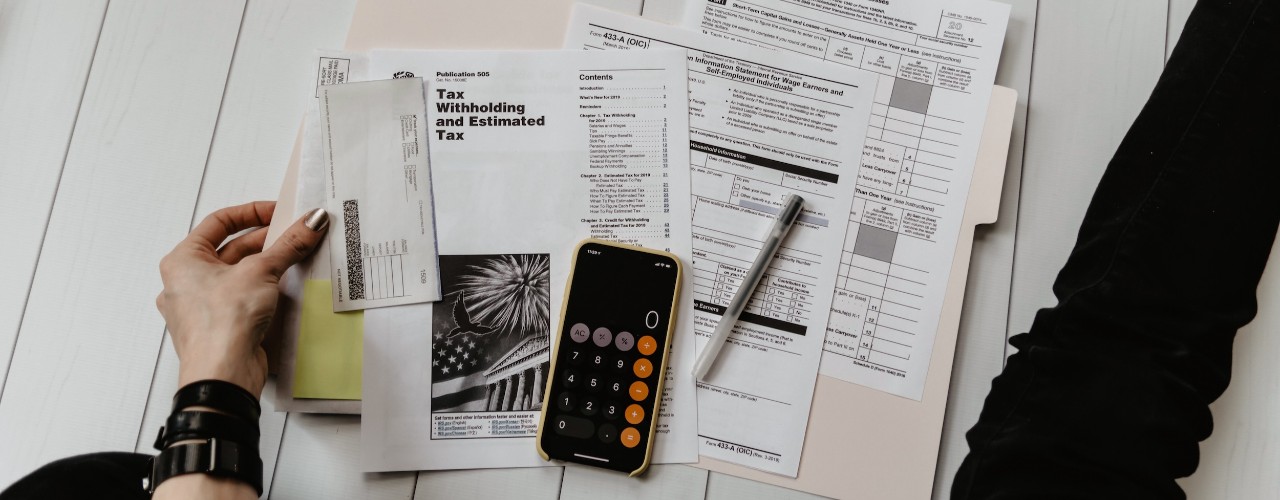
Quarterly tax rules for small businesses
Stay on top of projected earnings to avoid penalties
If you earned income as a new startup, young business or as a freelancer, you may need to pay estimated quarterly taxes.
Here’s what they are and how they work
Estimated tax payments are taxes paid to the IRS throughout the year on earnings that are not subject to federal tax withholding (such as earned wages from an employer). This includes self-employment or freelance earnings, or non-wage income you earned on the side such as dividends, realized capital gains or prizes.
“Many Americans who have previously had their taxes paid through their paychecks don’t know that quarterly tax payments are required of the self-employed and small business owner,” said Adam Olson, assistant professor of accounting in the Carl H. Lindner College of Business at the University of Cincinnati. “Making the payments on time and of the correct amount are necessary to avoid penalties and fees.”
Who should make estimated quarterly tax payments?

- Businesses: If corporations owe at least $500 for the tax year, they will likely need to make estimated income tax payments.
- The self-employed: Independent contractors, freelancers and people with side gigs who will likely owe more than $1,000 in taxes — because there is no tax automatically withheld on their income.
- People who are not having enough withheld: If you’ll owe at least $1,000 in federal income taxes this year after accounting for withholding and refundable credits such as the earned income tax credit.
- Landlords and investors: If your rentals earn a profit for the year, you are required to pay income tax. The amount of tax you'll have to pay on your rental income depends on your top tax bracket. If you are investing, the IRS requires an estimation of taxes to be paid quarterly and not just once a year in April. If you sell a stock for a profit, you should plan for a tax liability with estimated quarterly tax payments.
When are estimated quarterly taxes due?
Estimated tax payments should be made as your income is earned. The IRS sets deadlines for collection on a quarterly basis. Plan ahead, as these dates don’t usually coincide with regular calendar quarters.
You also can make quarterly payments more often. It may be easier to make smaller payments more often than four larger payments. If you owe $1,600 for the year, you may want to pay $133 every month instead of $400 four times a year.
Calculating quarterly estimated taxes
- One way is to estimate the amount you’ll owe for the year, then send one quarter of that to the IRS. For example, if you think you’ll owe $15,000 for 2023 you'd send $3,750 each quarter. This works best for people whose income is about the same throughout the year, or for people who know pretty much what their income will be.
- Another technique is to estimate your annual tax liability based on what you’ve earned during the current year. This is usually better for people whose income varies. Basically, you annualize your tax at the end of each quarter based on a reasonable estimate of your income and deductions so far this year. The IRS has a worksheet to help you do the math.
For both methods you’ll use IRS 1040-ES to reveal your income estimate and project your tax liability. IRS Publication 505 has all the rules and details, and a good tax software program will help you fill out the form and do the math.
If you overestimated or underestimated your earnings, complete another Form 1040-ES and refigure your estimated tax for the next quarter. When you file your annual return, you may need to attach an extra IRS Form 2210 to explain why you didn’t send equal payments.
If you paid too much, you can get a refund or apply the overage as a credit to future payments.
"The calculations can get complicated quickly, so it’s a good idea to consult with a qualified tax preparer if you have questions," Olson said.
- Story is for informational purposes only and does not constitute legal tax advice.
Featured image at top: Tax documents. Photo by Kelly Sikkema on Unsplash
Help for entrepreneurs
Through the 1819 Innovation Hub — UC’s front door to business — the University of Cincinnati connects corporations, small businesses and startup companies to a variety of business development services. Learn how to start, run and grow your business; build prototypes; test new business ideas and more.
Related Stories
Fall grads celebrate their success at commencement
December 12, 2025
The University of Cincinnati recognized more than 2,600 graduates at its fall commencement.
UC awarded nearly $1 million to help fight infant obesity spike
December 12, 2025
University of Cincinnati researcher Cathy Stough spoke with Spectrum News1 about a nearly $1 million National Institutes of Health grant awarded to UC to help prevent infant obesity through early nutrition support and family-based interventions.
Free GED prep classes offered at UC Clermont
December 11, 2025
UC Aspire is launching a free 16-week GED Prep Program at the University of Cincinnati Clermont College starting the week of Jan. 26.
